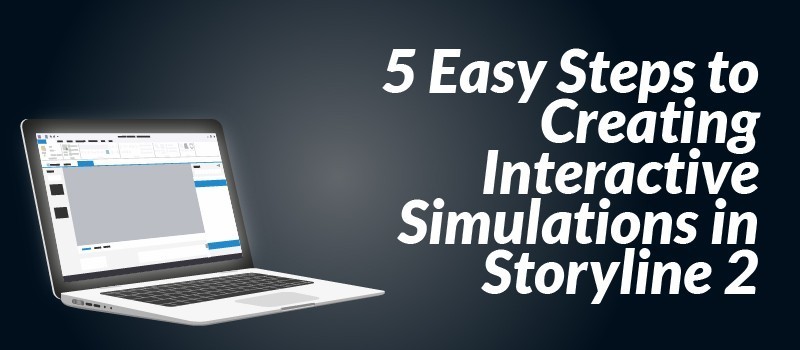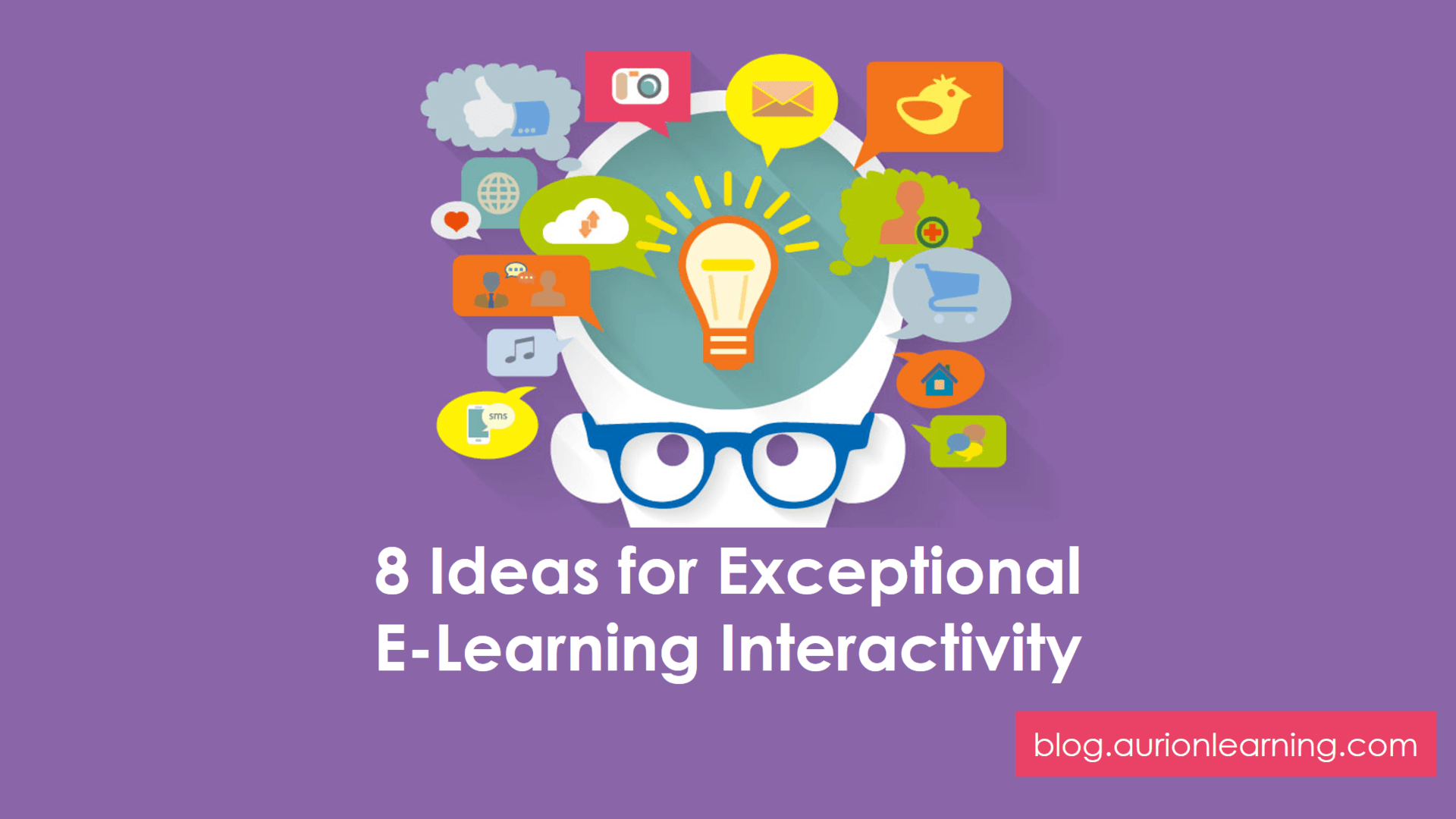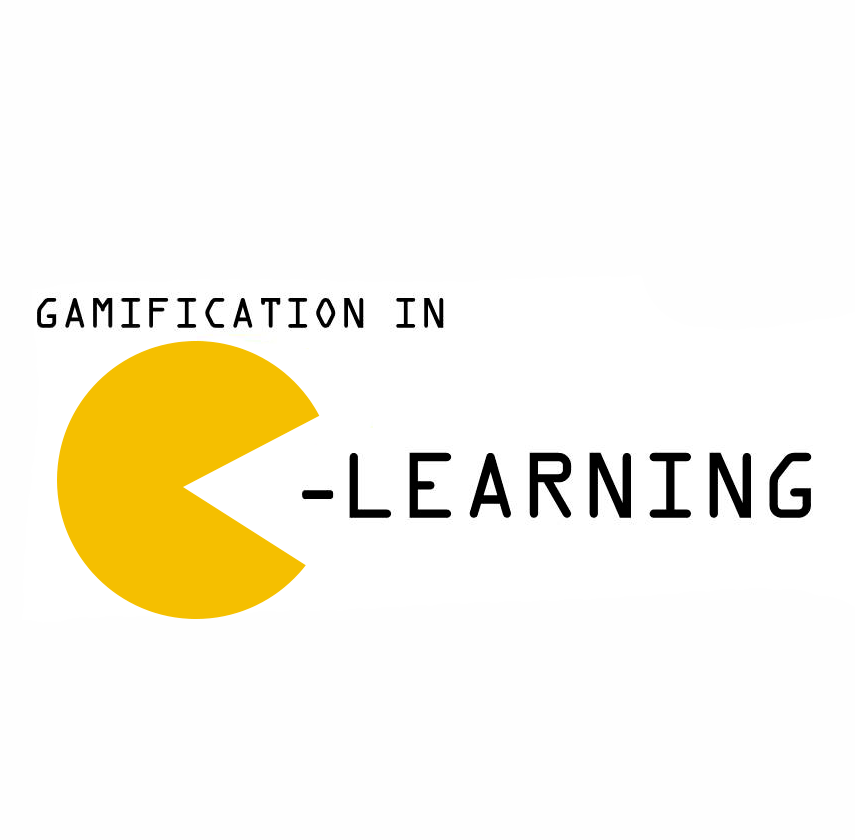Search for...
#Interactivity Bookmarks
Published Interactivity Bookmarks
 Interactivities In eLearning: Decoding The 4 Levels And Their Examples
Interactivities In eLearning: Decoding The 4 Levels And Their Examples
Interactivities make a world of difference to eLearning! Know more about the 4 different levels of eLearning interactivities.
 Interactive eLearning: 4 Ways To Challenge Your Learners
Interactive eLearning: 4 Ways To Challenge Your Learners
What exactly is an interactive eLearning course, and when is it used? Know how to use them to engage learners and compel them to act or think.
 5 Easy Steps to Creating Interactive Simulations in Storyline 2 » eLearning Brothers
5 Easy Steps to Creating Interactive Simulations in Storyline 2 » eLearning Brothers
“A picture is worth a thousand words.” So if one picture is worth a thousand words, how many words would a bunch of pictures be worth? Short answer: a lot! Today, we’re going to provide five easy steps to help you create engaging, interactive simulations using Storyline 2.
 5 ways elearning can support business change
5 ways elearning can support business change
Support your employees through business change with elearning. Learn how the best companies face key concerns by developing the skills of their staff.
 8 Ideas for Exceptional E-Learning Interactivity | Aurion Learning
8 Ideas for Exceptional E-Learning Interactivity | Aurion Learning
Interactivity is what differentiates dull and drab E-Learning from learning that provokes questions, draws in learners and captures information in a memorable way. If you want to create E-Learning that strikes a chord with learners and transforms learning from being a chore into something enjoyable, we’ve gathered eight ideas for exceptional E-Learning interactivity:
 5 Simple and Effective eLearning Interactions
5 Simple and Effective eLearning Interactions
Why invest in eLearning courses instead of “flat” media like powerpoints and webinars? The interactivity, of course. Besides the obvious benefits of reduced costs and a virtual training environment, eLearning allows learners to practice new skills and concepts safely through a variety of interactions.
Seeking Feature Ideas and Suggestions for Our New Evolve Interaction
New and different things usually grab everyone’s attention. Learners are not an exception; they also tend to get excited if they see something new and attractive. All such things enhance the overall learning experience. This can be achieved in multiple ways. One strategy is through showing innovative interactivities as a part of the learners’ course. And how do you do it? Simple, through Raptivity!
VIKAS JOSHI: Interactivity - beyond mere interfaces
Now that we have reviewed (in our earlier blog posts) how Apple, Google, Facebook and Amazon are advancing interactivity technology, let's take the time to return to basics.
Many people confuse interactivity design with interface design. In this post, I wish to present a simple table that would clarify the difference between interactivity and interfaces.
Many people confuse interactivity design with interface design. In this post, I wish to present a simple table that would clarify the difference between interactivity and interfaces.
How to Build Interactivity into eLearning
We all know adding meaningful interactivity into eLearning courses allows learners to participate in the learning process, thus creating an enhanced learning environment. But building interactivities can be challenging if you don’t have the right resources, time, or money.
 Game on? The use of gamification in e-learning.
Game on? The use of gamification in e-learning.
Many HR and L&D professionals face the problem of ensuring that their training and learning programmes maintain learner engagement and motivation. Gamification has been regularly recognised as an opportunity to help solve this problem.
Submit Bookmark





